MAP CONTROLS: Use slider or mousewheel to zoom, and hold down left mouse button
to drag.
KEY: Location markers are coloured from Green meaning exact to Red meaning
gone or unknown (details here)
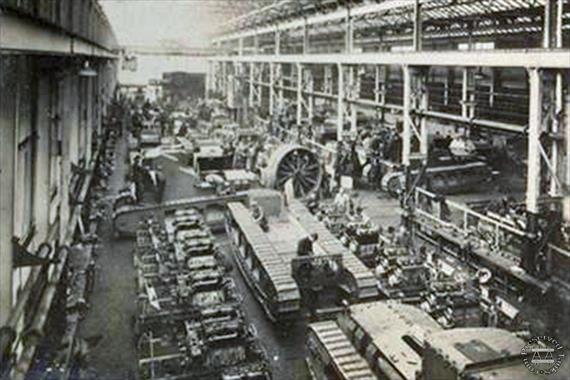
|
|
Location Category ID:
|
3590
|
|
Added to Database:
|
5 March 2011
|
|
Last Edited:
|
5 March 2011
|
|
Address: |
Waterloo Street, Lincoln, LN6 7AQ
|
|
Telephone: |
|
|
Email: |
|
|
Opening Times: |
|
|
Official Website: |
|
|
Other Links: |
Wikipedia
Lincolnshire Archives
Lincolnshire Vintage Vehicle Society
Water Carriers for Mesopotamia
Bing Maps
|
|
Latitude, Longitude: |
53.22328268
,
-0.55225611
|
|
Location Accuracy: |
7
|
|
Tanks Previously Here: |
Tanks confirmed built here:
1: Mark IV Heavy Tank - The Tank Museum - Public Areas, Bovington, Dorset, South West England, Britain (Manufactured 1917)
Models of tank built here:
1: Little Willie Tank (Design parent and manufacturer of sole prototype September 1915)
2: Medium Mark A Whippet Tank - Whippet (Design parent and sole manufacturer late 1917-early 1918)
3: Mark I Heavy Tank (Design parent and secondary manufacturer 1916)
4: Mark II Heavy Tank (Design parent and manufacturer late 1916-early 1917)
5: Mark IV Heavy Tank (Design parent and secondary manufacturer late 1916-late 1917)
6: Mark V** Heavy Tank (Sole manufacturer)
7: TOG 2* Heavy Tank (Sole manufacturer)
Long term:
1: Little Willie Tank - The Tank Museum - Public Areas, Bovington, Dorset, South West England, Britain (Returned after trials and driver training 1916)
|
William Foster began his business career as a flour miller, but in 1856 he took the decision to convert his premises into a foundry and engineering shop. Foster began by producing grinding mills, but he soon expanded his product range to include thrashing machines, chaff cutters and portable steam engines. He died of typhoid in 1876, but the company that he founded continued to prosper and by the outbreak of the First World War the firm's Wellington Foundry employed 350 people. During the war the company made a vital contribution to the Allied cause by developing and building the world's first tank. (Source: Lincolnshire Archives).
Foster’s managing director was a man named William Tritton, a dynamic man who had re-vitalised Foster’s trading position in the pre-war years and who quickly adapted to the new opportunities that wartime threw up. He was assisted by his chief draughtsman William Rigby, and Walter Wilson – a Naval Lieutenant whose skill and engineering flair had been born out of flirtations with the early motor cars and flying machines. Tritton and Wilson took just 37 days to produce the first prototype tank and it was tested on waste ground near the factory on 19th September 1915. Known as Little Willie it was a simple 15 ton armoured box on top of American caterpillar tracks which had the unfortunate habit of coming off whenever a manoeuvre was carried out. The men persevered with different designs and finally came up with a track which went all the way around the tank body. This vehicle was known initially as Big Willie, and later as Mother, and formed the basis for the majority of British World War I tank designs. (Source: Water Carriers for Mesopotamia).
In 1927 Foster & Co. took over the Hammersmith-based pump manufacturer Gwynnes Engineering and three years later pump production was transferred to Lincoln. Over the next few decades the company moved away from the production of agricultural machinery and concentrated on pumps. In 1960 Foster & Co. was acquired by W H Allen & Co. Ltd and the company began trading as Allen Gwynnes Pumps Ltd. Unfortunately, the new company did not prosper and the Wellington Foundry closed in 1968. (Source: Lincolnshire Archives).
The foundry occupied land between Waterloo Street and Firth Road. This land is now part of a retail centre on Tritton Road (named after Foster’s managing director) with only a short stretch of Waterloo Road remaining. The site was purchased from Allen Gwynnes and used for a few years in early 1970's by the neighbouring Ruston-Bucyrus company. It was then demolished to create the present day retail park. All that remains is a section of wall that now divides the retail park from a row of houses along Waterloo Street. The only other known surviving relic is the stone sign from the factory front which was rescued when the site was demolished and is on display at the Museum of Lincolnshire Life. (Source: LVVS).
|
2009
|
| | | | 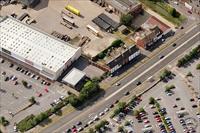 | | | | |
1: Foster works on Waterloo Street - the tall, buttressed b...
Taken: 2009 (Estimated)
Contributor: Bing Maps
Location Photo ID: 432
Added: 5 March 2011
Views: 394
Has Priority: 0
|
|
|
|
|
|
|
1918
|
| | | | 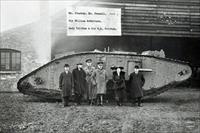 | | | | |
2: William Foster and Co. Ltd in Lincoln, photo from Lincol...
Taken: 1918 (Estimated)
Contributor: CRFU
Location Photo ID: 433
Added: 5 March 2011
Views: 550
Has Priority: 0
|
|
|
|
| | | | 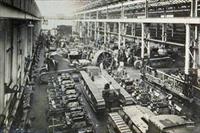 | | | | |
3: “View of the tank assembly shop at the Lincoln works of ...
Taken: 1918 (Estimated)
Contributor: CRFU
Location Photo ID: 445
Added: 21 March 2011
Views: 295
Has Priority: 20
|
|
|
|
|
December 1915
|
| | | | 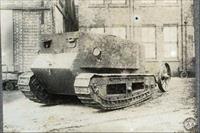 | | | | |
4: Little Willie outside the works of William Foster & ...
Taken: December 1915
Contributor: CRFU
Location Photo ID: 431
Added: 5 March 2011
Views: 573
Has Priority: 0
|
|
|
|
|
|
|
May 1915
|
| | | | 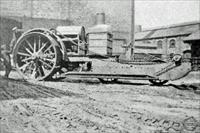 | | | | |
5: Tritton Trench Crossing-Machine, presumed to be at Foste...
Taken: 1 May 1915
Contributor: Wikimedia
Location Photo ID: 430
Added: 5 March 2011
Views: 351
Has Priority: 0
|
| | | | | |
|
|